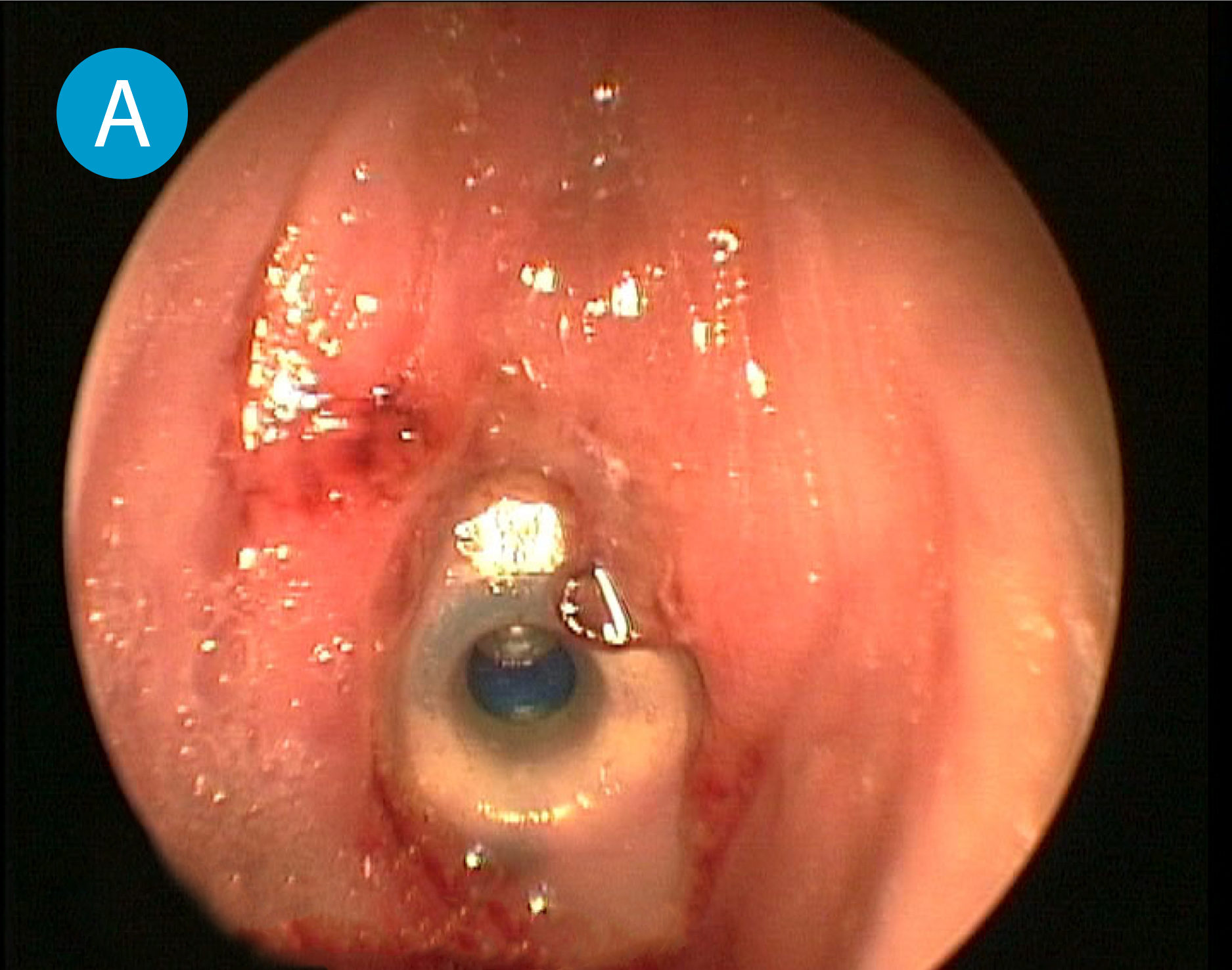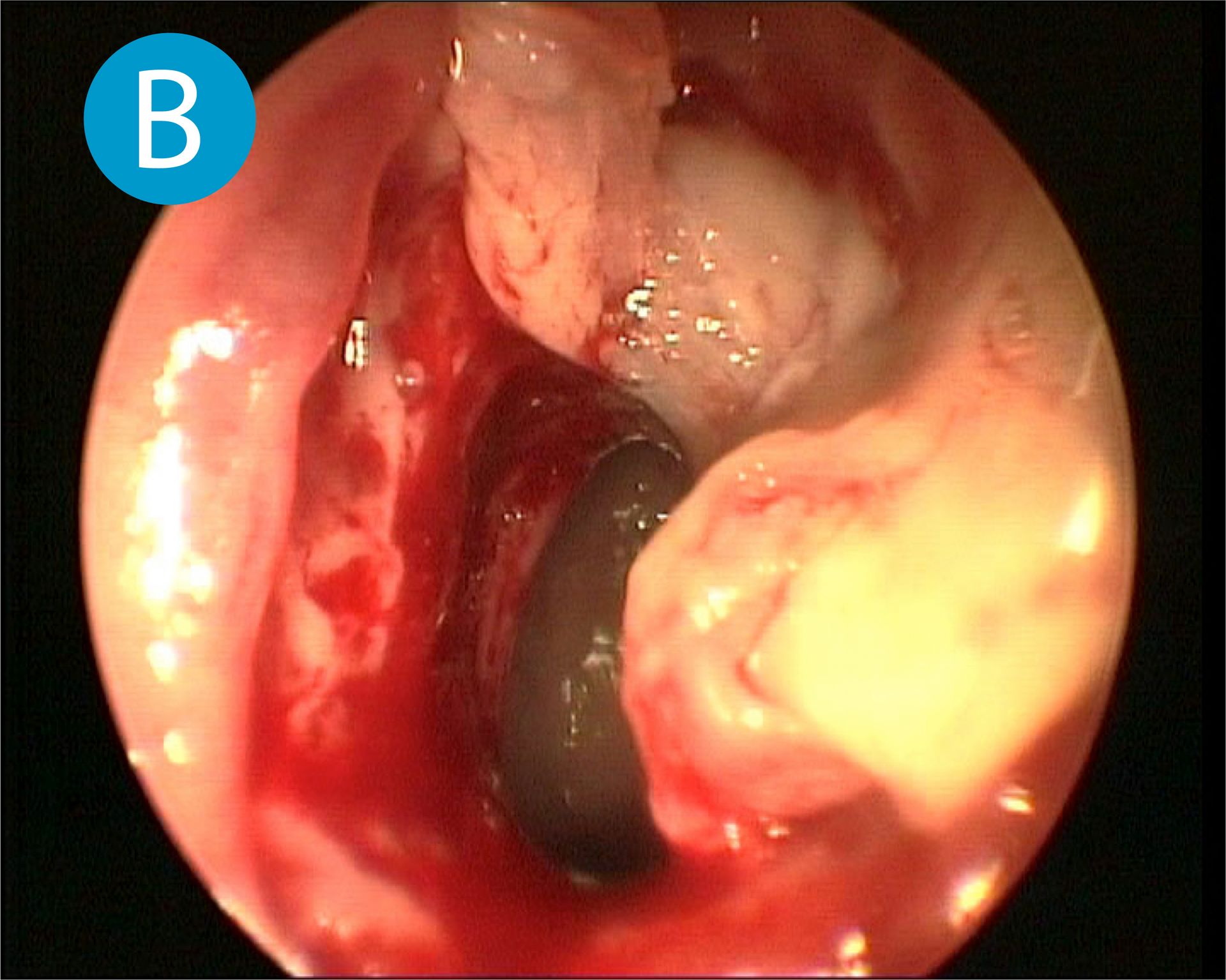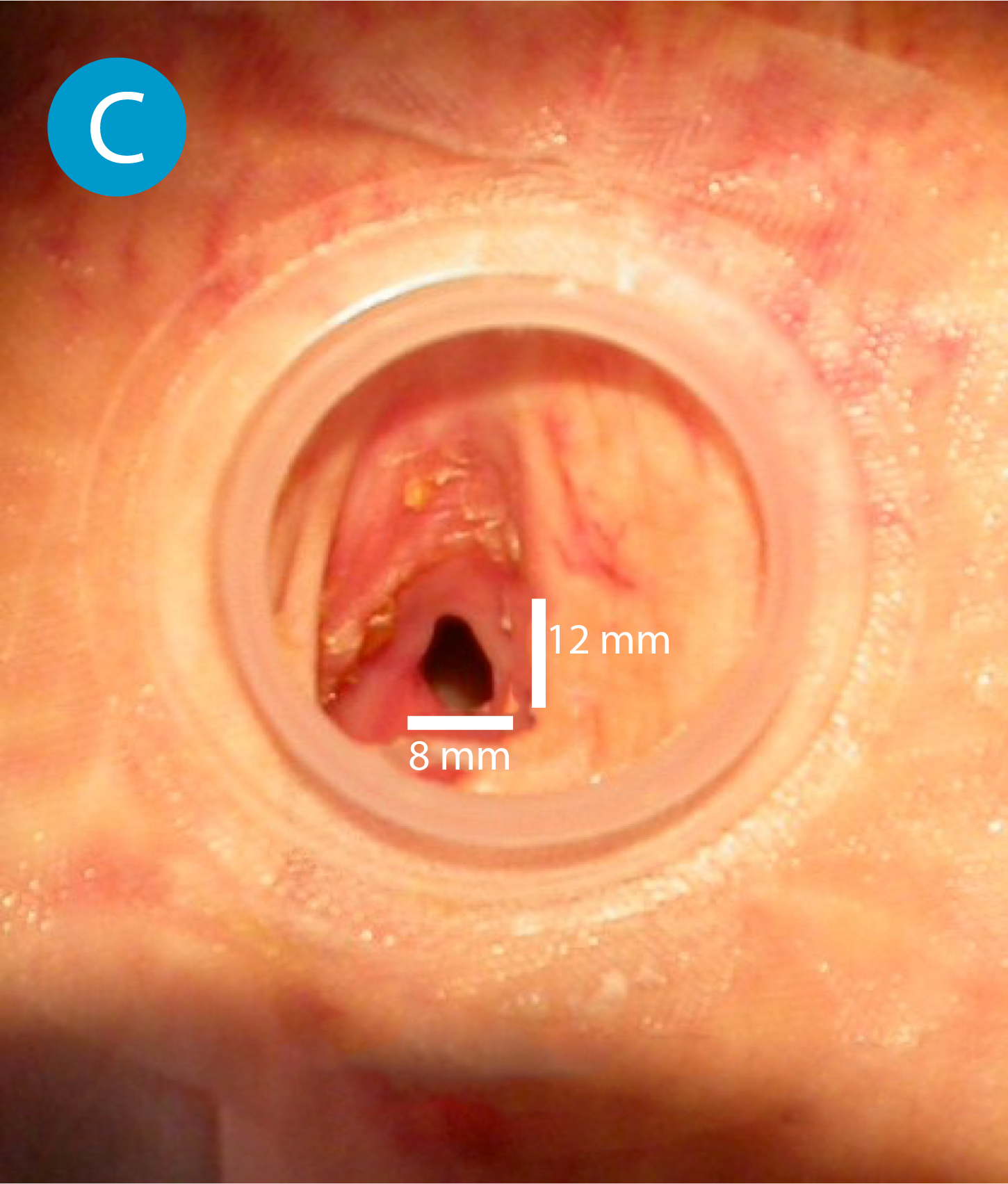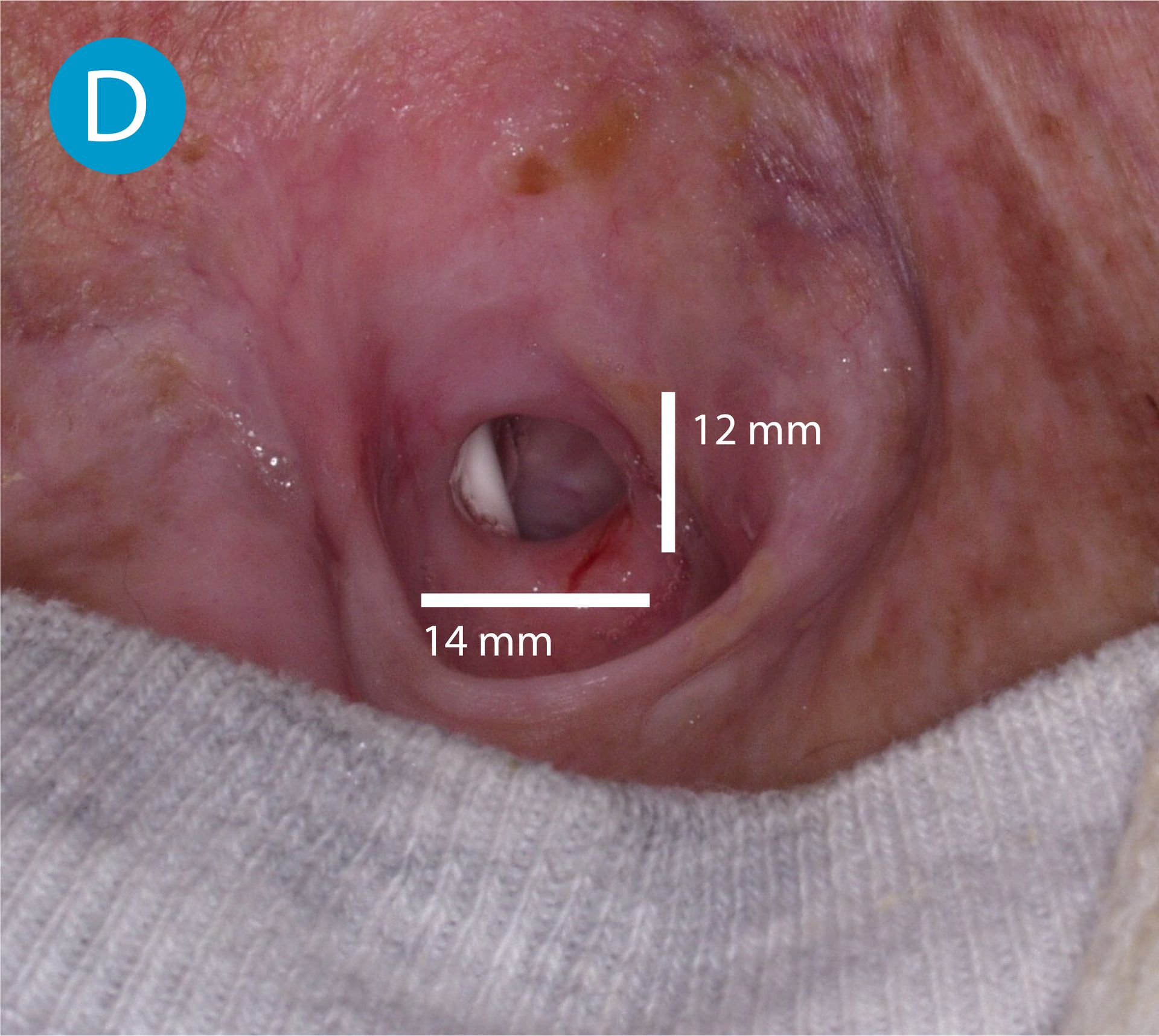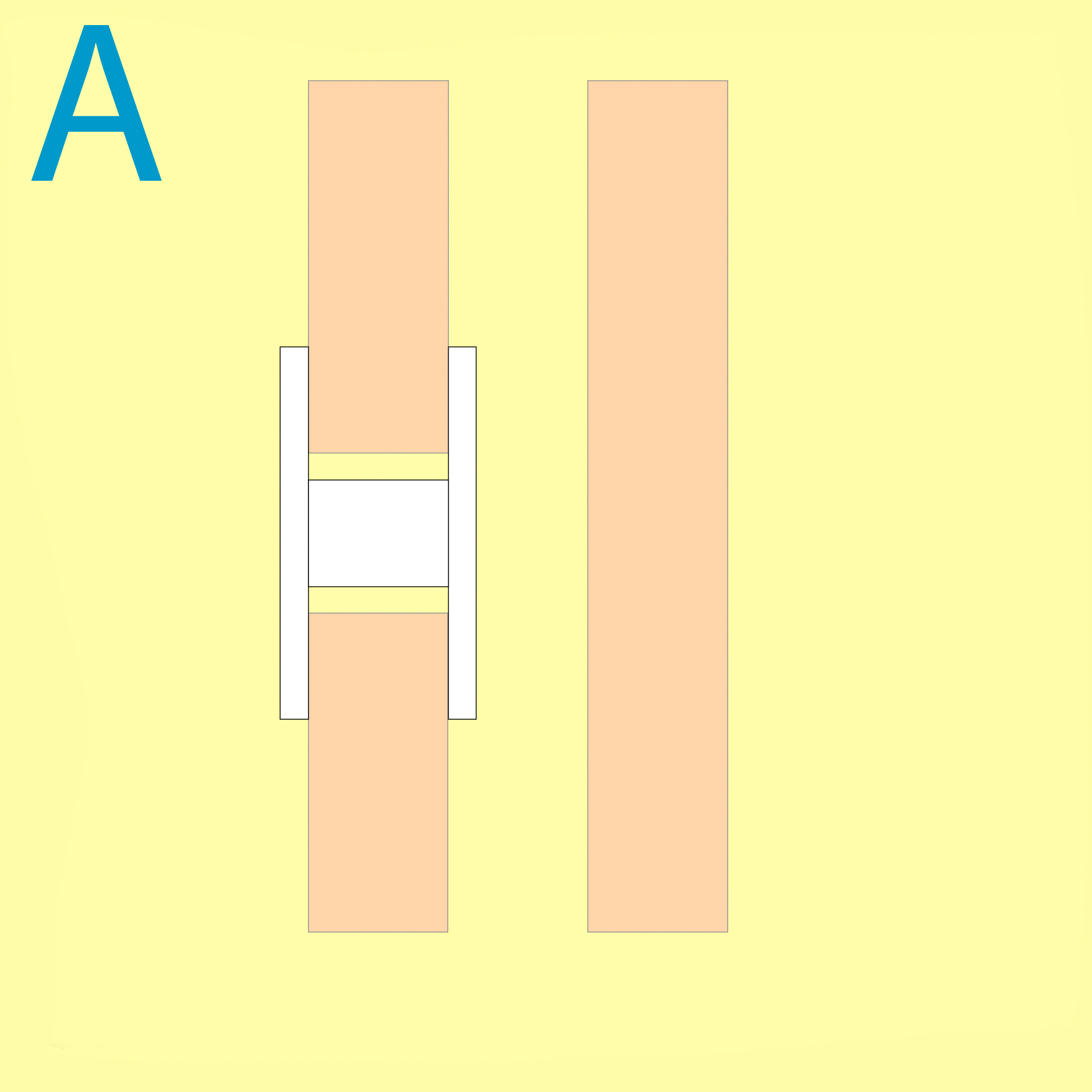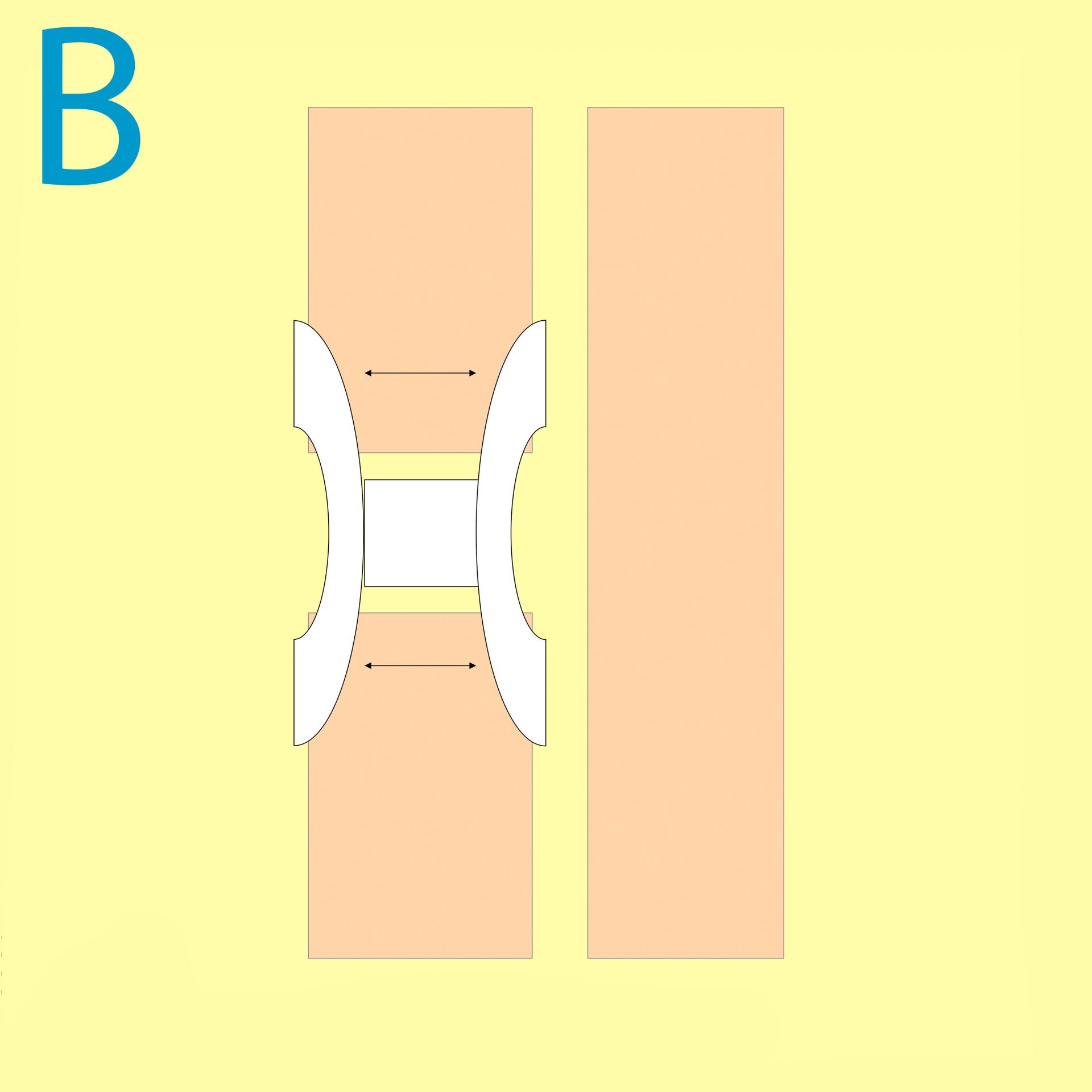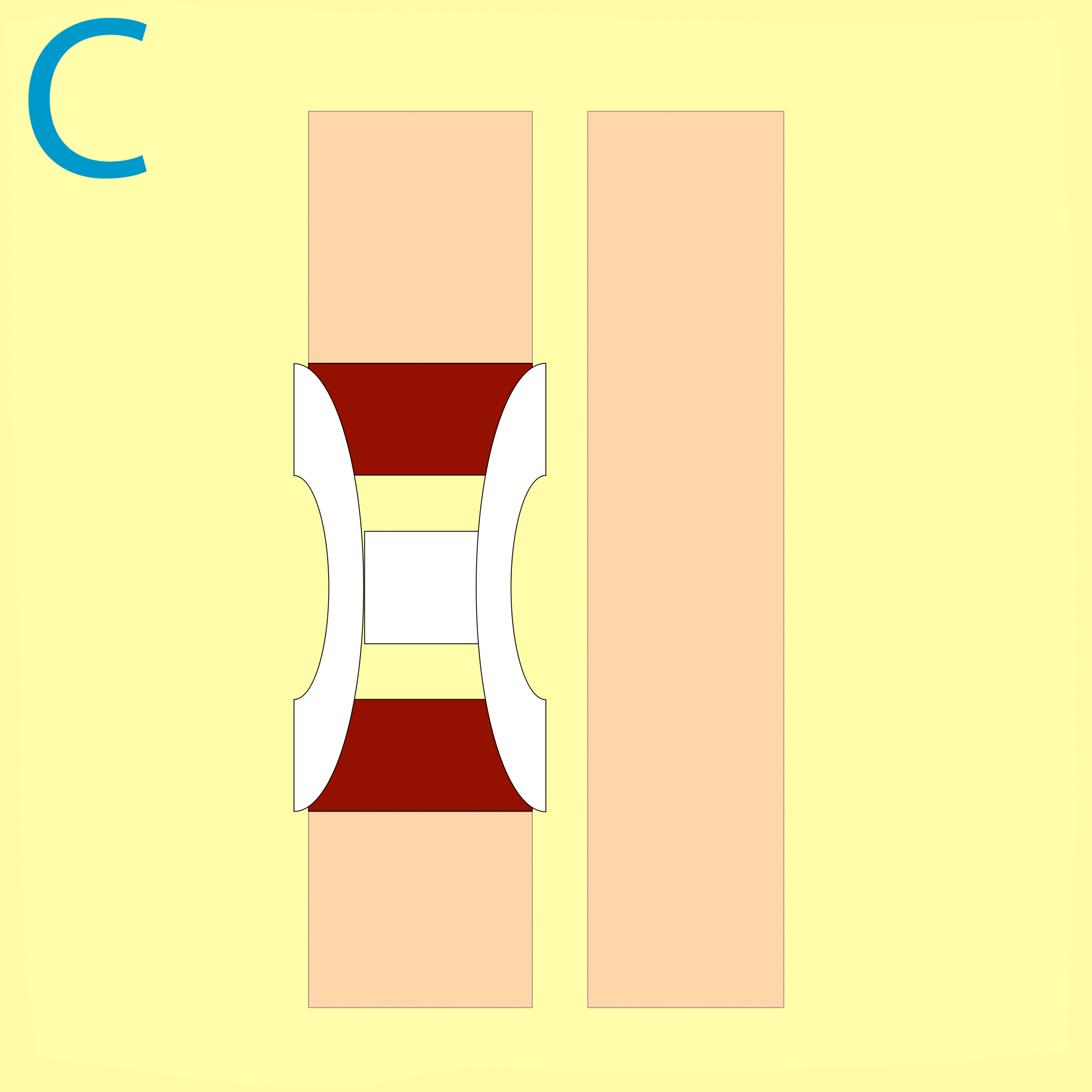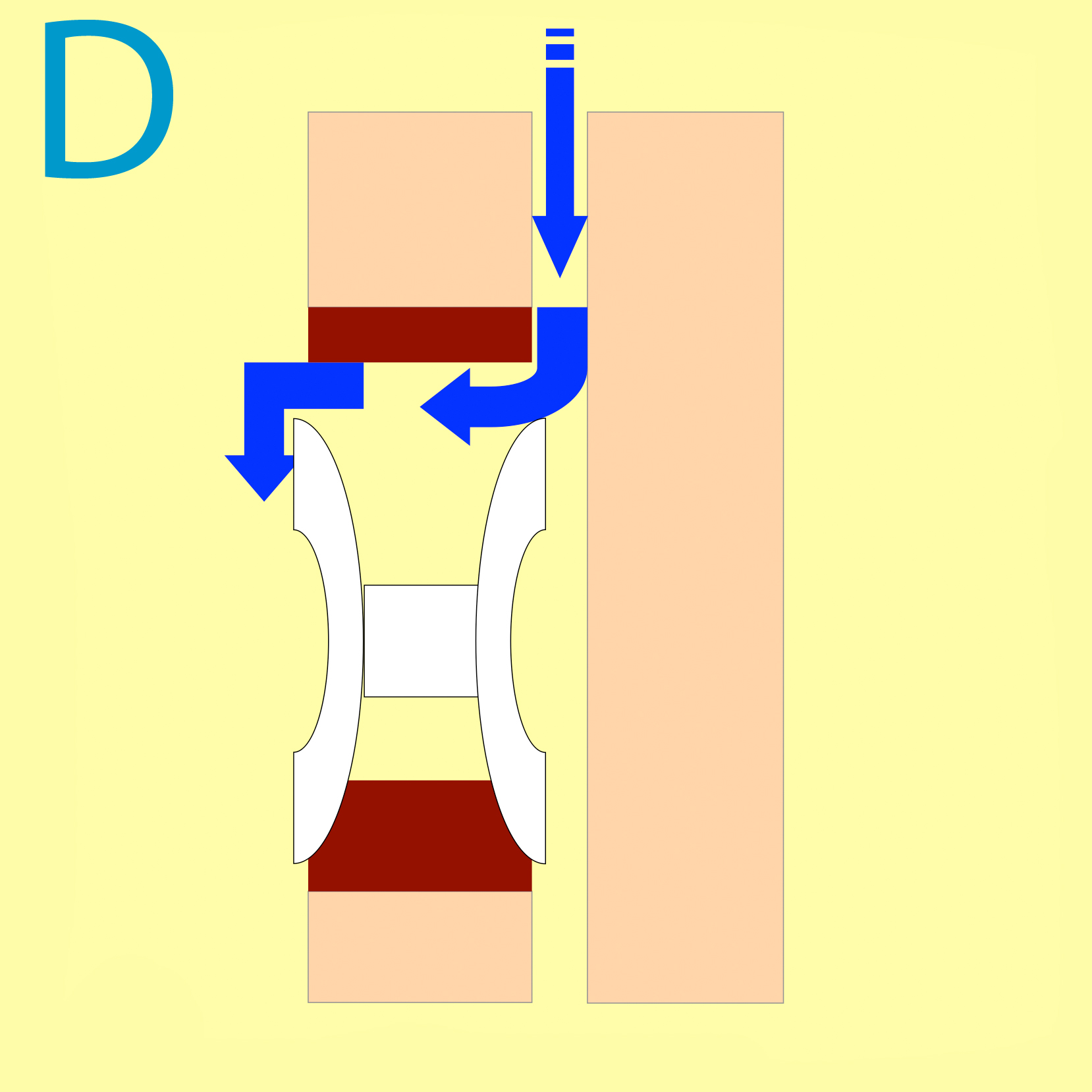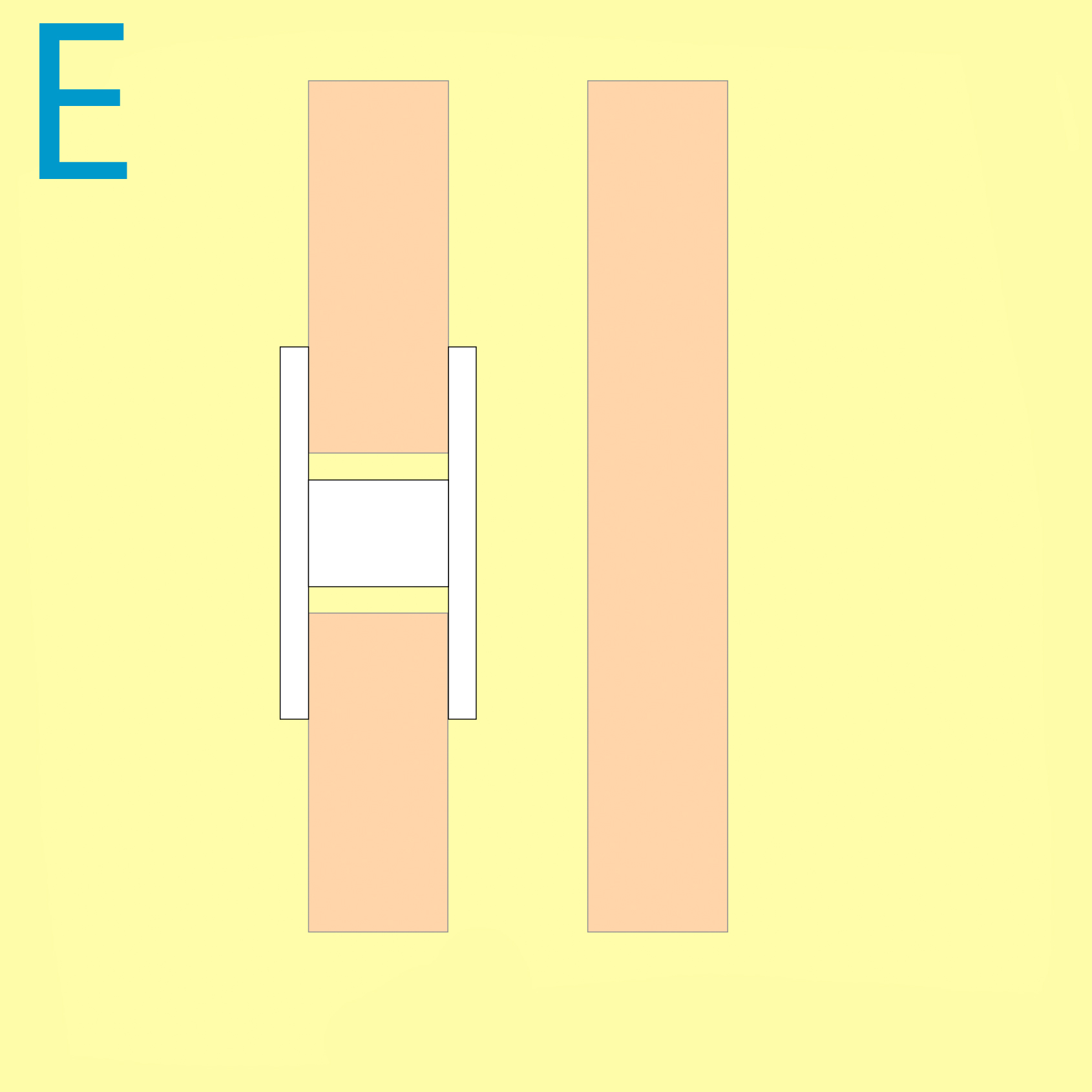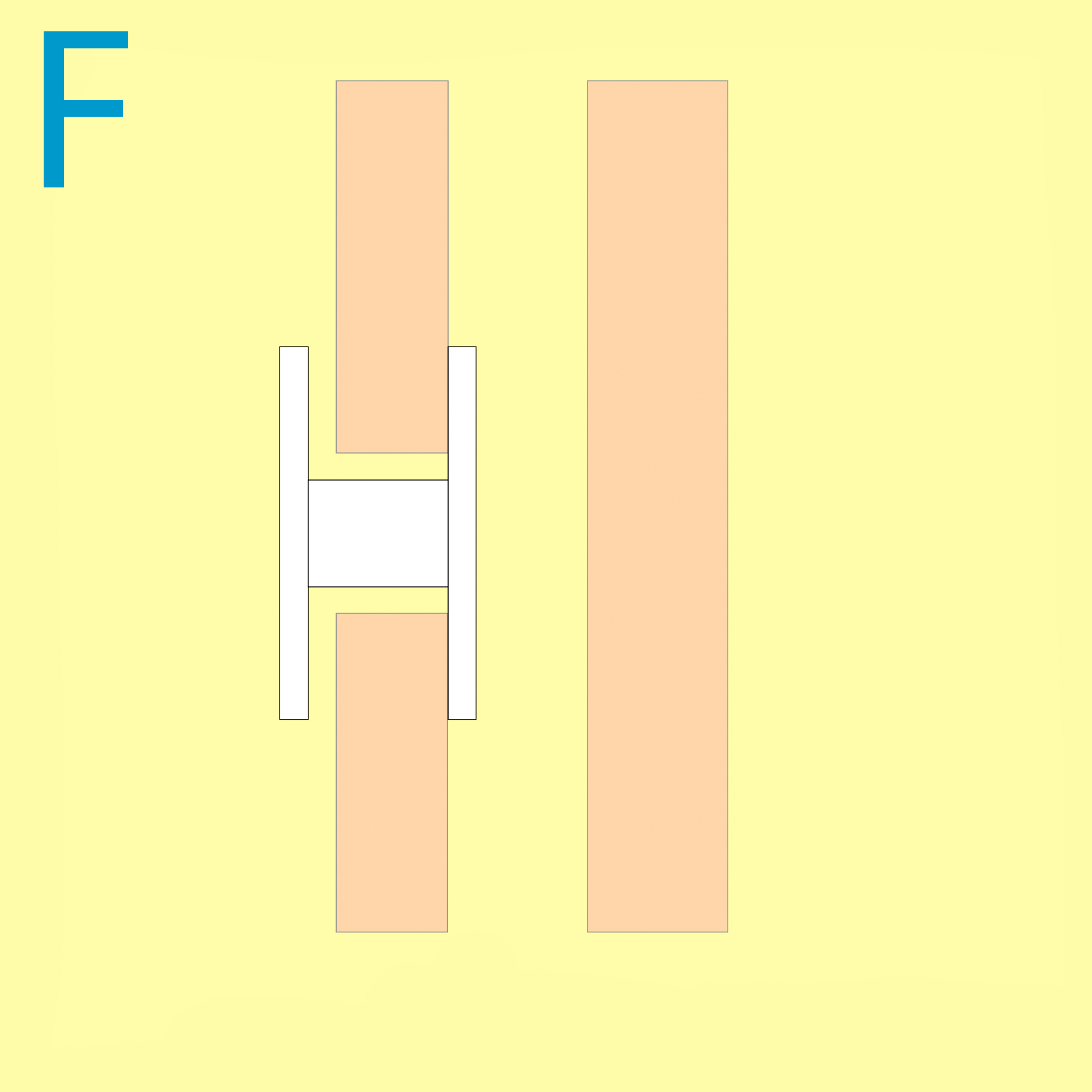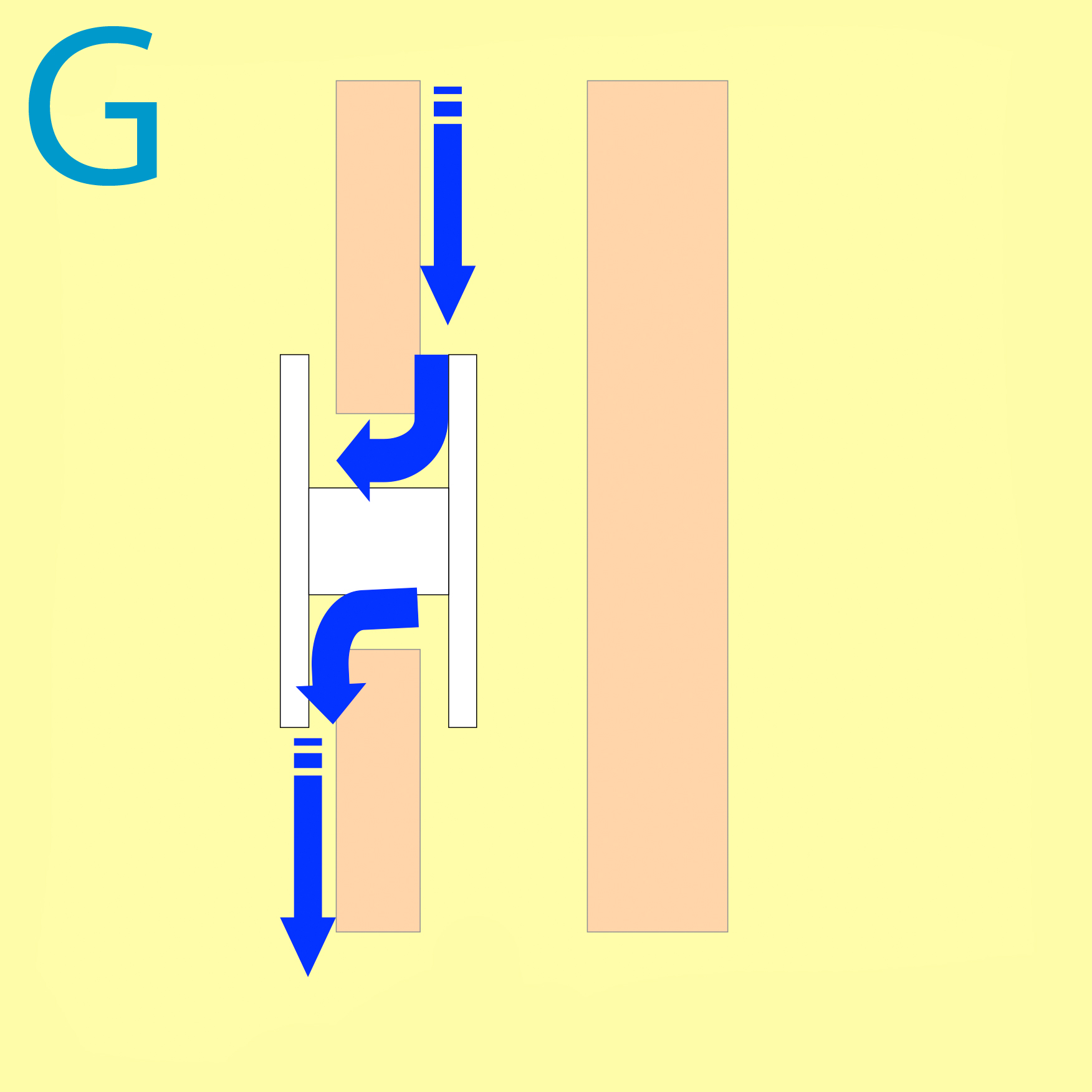Shunt Insufficiency
Definition
Shunt insufficiency is a pathological change in the esophagotracheal fistula (= the shunt), as the consequence of which fluid escapes from the esophagus into the trachea, along/around the voice prosthesis. There is no adequate seal between the esophagotracheal fistula and the voice prosthesis.
Frequency:13-27% of all voice prosthesis changes (27% Laccourreye O. et al. (1997), 13% Op de Coul BM et al. (2000), 26% de Raucourt D. et al. (1998)
Pathophysiology
We differentiate between two types of shunt insufficiency: the infected necrotic shunt, and the dilated atropic shunt.
Infected necrotic shunt
An infected necrotic shunt occurs acutely as the result of a local infection of the shunt and prosthesis. The swelling of the shunt leads to a compression of the shunt tissue between the flanges of the voice prosthesis (ill. A), which results in necroses of the shunt tissue. Leakage occurs as these necroses break down.
Development of an infected necrotic shunt
Dilated atrophic shunt
The dilated atrophic shunt occurs slowly, often after many years of the voice prosthesis being used without problems. The shunt gradually becomes thinner, until the voice prosthesis is no longer sealed properly. Prosthesis lengths of 4 mm and less are not unusual. In some cases, systemic causes may be found for shunt atrophy (poorly managed Diabetes mellitus, tumor recurrence, cachexia, hypothyroidism etc.). If the systematic disease is successfully treated, the shunt situation usually also improves.
Development of a dilated atrophic shunt
Table comparing the two types of shunt insufficiency
| Shunt type | Infected/necrotic shunt | Dilated/atrophic shunt |
|---|---|---|
| Pathology | Infection, swelling, pressure by the prosthesis flange, necroses | Atrophy, scarring, dilation of the shunt |
| Occurrence | Acute, e.g. in cases of infection, radiotherapy or following surgery | Slowly following unproblematic prosthesis performance |
| Prognosis | Good, often a one-off occurrence | Moderate, often chronic problem |
| Frequency | ~50% of all periprosthetic leaks | ~50% of all periprosthetic leaks |
Symptoms of shunt insufficiency
The main symptom of shunt insufficiency is periprosthetic leakage when attempting to swallow. It shows that rather than the voice prosthesis being responsible for the leak, the shunt is in fact not closing properly around the prosthesis. Often, an examination will reveal a widening, inflammation or necrosis of the shunt. Even short-term prosthesis losses should be followed by examination of the shunt to establish its stability.
Diagnosis of shunt insufficiency
If a periprosthetic leak occurs when the patient attempts to swallow and the voice prosthesis is of the correct length, or if the insertion of a correctly measured voice prosthesis fails to remedy a periprosthetic leak, then the shunt is insufficient. In line with the above criteria, clinical examination and anamnesis will enable the practitioner to differentiate between an infected necrotic and a dilated atrophic shunt.

